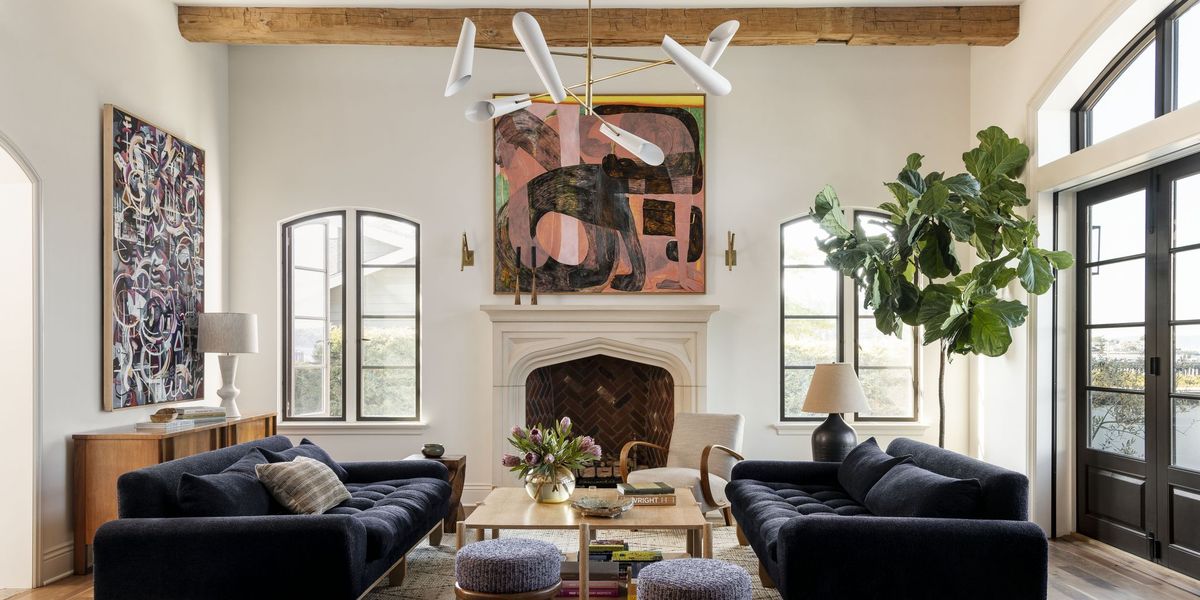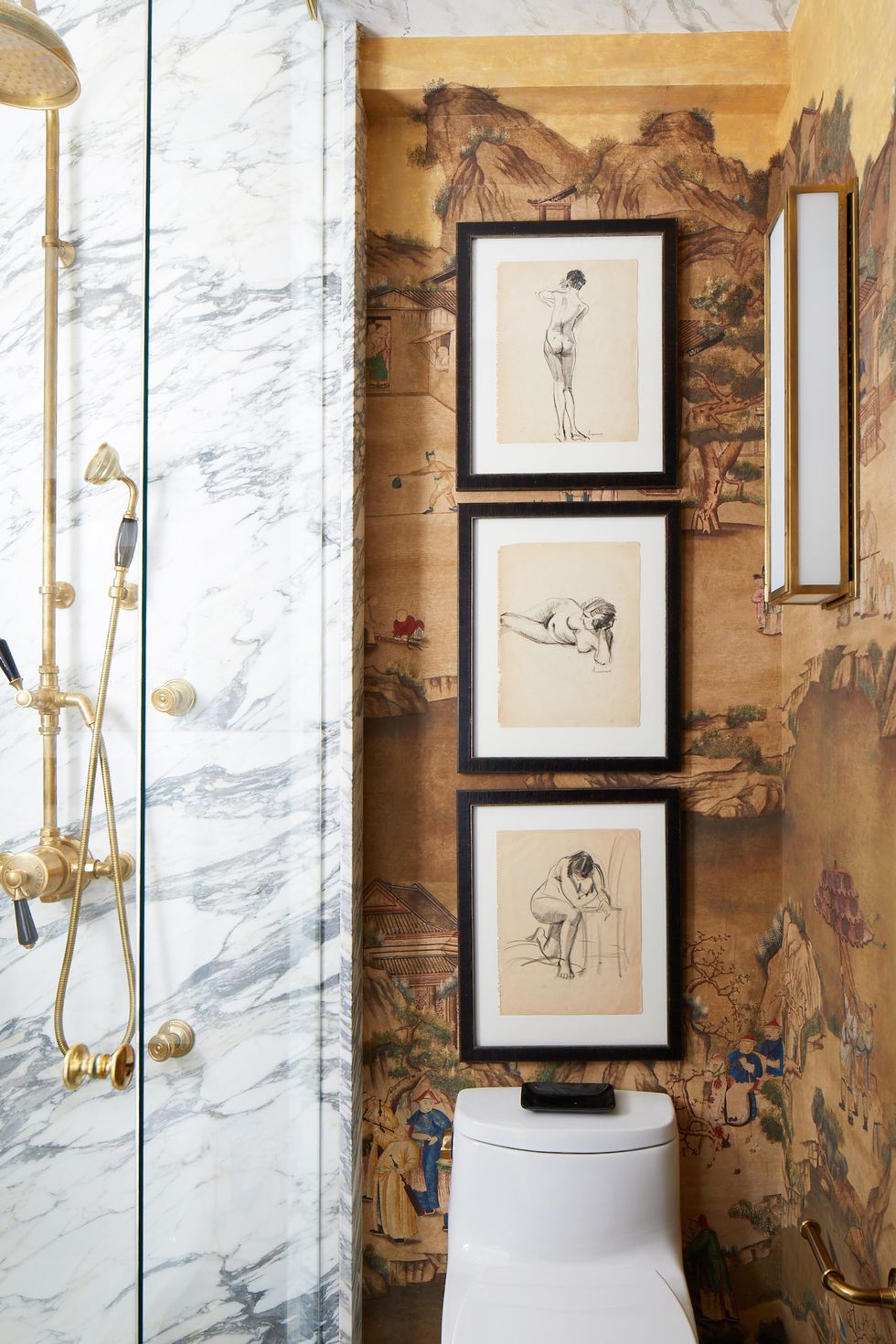When it comes to outfitting a stylish home, filling it with pieces that, dare we say, spark joy is essential. In our and experts’s opinions, beautiful art is just as important as the furniture, decor, and palette you choose, so picking the right works is paramount. That said, what constitutes the so-called right works? We reached out to art experts for answers that are guaranteed to guide anyone through the art procuring process—and let us just say, it’s easier than you may expect.
For expert advice, we turned to former chief marketing officer of Artsy Everette Taylor; Houston-based art consultant Elise Arnoult Miller; and New York City-based art advisor Emily Santangelo. Though they’re each driven by different forces and approach art from different angles, they all agreed that spending an exorbitant amount of money on big-name artists is never the best approach. You may be surprised at what they have to say.
Know What You’re Buying
Art is a broad category, encompassing everything from portraits to performances. But for people decorating homes, most collecting will center around paintings, drawings, and prints—the stuff you can frame and put on a wall. These pieces generally fall into one of three categories: original works, limited-edition prints, and open-edition prints.
An original work is fairly self-explanatory: It’s a single piece created by the artist and is more valuable than a print. Prints are produced in multiples; the size of the edition indicates how many were made. If you don’t see a clearly marked edition size on a print, it’s likely because there isn’t one—that’s what’s called an open-edition print, meaning an unlimited number can be produced, and none will hold much value.
“Prints give people access and the opportunity to enjoy that artist’s work without paying the price of the original painting or artwork,” says Taylor.
Do Your Homework
Whether you’re buying an original or a print, the first criteria is that you want to look at the artwork it every day. Beyond that, there are a few more questions you should ask. “If you found something that you really love, what gallery is it from? Check out the gallery to see what their reputation is, and ask them to talk you through [the artwork],” Miller suggests. “You need to know something about the artist, know that the source is reputable, and know about quality. I wouldn’t go and just buy things blindly as a new collector on any platform.”
Of course, a gallery is not your only option. You can also buy from a reputable online source, provided that they can offer all the above info about the provenance of the piece. “A gallery can be very intimidating and unwelcoming, especially if you don’t feel like you’re well-versed in the art world,” says Taylor, who bought his first piece on Artsy before he ever joined the company. “I didn’t have to worry about anyone judging me or about not knowing XYZ about the artist. This was all available to me right at my fingertips.”
Wherever you buy, doing your due diligence will safeguard you from the worst art epiphany: admiring your new artwork and realizing it’s not the real deal but a fake or imposter. Santangelo notes that when buying art, there are two routes to explore before whipping out your credit card or checkbook: primary market sales and provenance. The primary art market is the first or original sale that takes place either at a gallery or directly through the artist. After that, provenance comes into play. “Provenance, by definition, is a record of ownership of a work of art or an antique, used as a guide to authenticity or quality,” she explains. “Purchasing art via reputable galleries showcasing artists’s latest works will certainly allow a collector to avoid any issue as to authenticity.”
Inspiration: 36 Interiors With Great Art
Invest With Your Heart and Your Head
Art is subjective and deeply personal—there’s no universally accepted standard of what’s “good” or even valuable. Collecting, then, exists at a curious intersection of what you love, what your home needs, and what feels like a sound investment. Gallerists, curators, and art advisers across the market agree that the best route is to view appreciation in value as a happy surprise and to surround yourself with pieces that move you personally.
That said, if you’re pursuing art only for financial gain, you’re probably better off placing your bets elsewhere. “There is no crystal art ball that will guarantee a work will appreciate over time,” Santangelo explains. “Of course, a good art advisor is always helpful in giving insights. In fact, the best advisors have a deep intuitive understanding of the art market and can guide you in collecting.” Perhaps not so surprisingly, Santangelo says that your personal love of the art is first and foremost, and “any appreciation in value is a bonus.”
Because there is no way to guarantee that any one work or artist will gain fame or appreciation over time, putting all of your financial hopes and dreams into your collection is not the move. Instead, only buy pieces that really speak to you and your aesthetic. “Great art elevates a space and is a compliment to almost any design. Once you are truly bitten by the collecting bug you will own more work than you have walls,” Santangelo admits.
Follow House Beautiful on Instagram.








